Suchergebnisse
Digitale Informationsmodelle für die Planung und Optimierung von Gebäuden und urbaner Energieinfrastruktur (DIM4Energy)
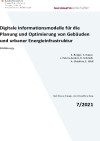
Digitale Informationsmodelle (DIM) spielen in urbanen Planungs- und Entscheidungsprozessen eine immer bedeutendere Rolle, angefangen bei einzelnen Gebäuden (Building Information Models, BIM) bis hin zu ganzen Städten (Urban Information Models, UIM). Für die Planung und Betriebsoptimierung von Plus-Energie-Quartieren könnten aus diesen bereits vorhandenen Modellen wertvolle Informationen gewonnen werden, sofern die entsprechenden Datenquellen und damit verbundenen Softwaretools richtig miteinander verknüpft würden.
Schriftenreihe
7/2021
K. Berger, S. Hauer, J. Peters-Anders, R. Schmidt, A. Shadrina, E. Widl
Herausgeber: BMK
Deutsch, 52 Seiten
Downloads zur Publikation
Counterintuitive Building Types - Innovationspotenziale zur nachhaltigen Transformation von Gewerbe- und Einzelhandelsstandorten
Ausgewählte Einzelhandels- und Gewerbeliegenschaften liefern für dieses Projekt Bestandsressourcen, die als Fallstudien in Richtung positiverer Energie-, Nutzungs-, und Lebenzyklusbilanzen um- und weitergebaut werden. Die derzeit leistungsschwachen Liegenschaften werden durch Raum- und Nutzungsvervielfältigungen in den Innen- und Außenbereichen zu aktiveren und attraktiveren Orten höherer Erlebnisdichte und ökologischer Relevanz transformiert und zeigen so Möglichkeiten zur zukunftsfähigeren Entwicklung dieser wenig untersuchten Gebäudetypologien auf.
Counterintuitive Building Types - Innovation Potentials for Sustainable Transformation of Commercial and Retail Locations
Selected commercial retail and properties provide existing resources for this project’s case studies that will convert and further develop them towards more positive energy, use, and life cycle balances. The currently underperforming properties will be transformed into more active and attractive places of higher experiential density and environmental relevance through multiplication of space and uses in the interior and exterior areas, demonstrating opportunities for more sustainable development of these understudied building typologies.
Entwicklung einer strukturierten und fehlerminimierten Datenaufbereitung und Dokumentation für Energieausweise (EDEN)
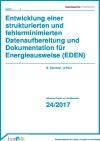
Ziel des Forschungsvorhabens war eine substantielle Behandlung der Problematik der mangelnden Reproduzierbarkeit der Resultate von Energieausweisen in der Praxis.
Schriftenreihe
24/2017
B. Sommer, U. Pont
Deutsch, 74 Seiten
Downloads zur Publikation
Der städtische Untergrund als Rohstoffmine? Potential an Sekundärressourcen in der erdverlegten Infrastruktur
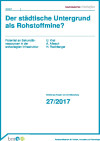
Machbarkeit eines Ressourcenkatasters zur Inventarisierung, Charakterisierung und Verortung der Materialbestände in den erdverlegten Infrastrukturnetzwerken österreichischer Stadtregionen. Das Ergebnis dient der ökonomischen Bewertung von Sekundärrohstoffpotenzialen.
Schriftenreihe
27/2017
U. Kral, A. Allesch, H. Rechberger
Deutsch, 73 Seiten
Downloads zur Publikation
Anwendung nichtlinearer Regelungstechnik und intelligenter Sensorik zur Effizienzsteigerung in Gebäuden
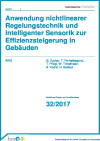
Mit modellbasierten, nichtlinearen Methoden der Regelungstechnik in Kombination mit intelligenter Sensorik, wurden im Rahmen des Projekts innovative Steuer- und Regelkonzepte für Heiz-, Kühl- und Lüftungssysteme (HKL) und Gebäudelasten entwickelt und in Gebäudemanagementsysteme implementiert.
Schriftenreihe
32/2017
G. Zucker, T. Ferhatbegovic, T. Pflügl, W. Timelthaler, B. Kodré, H. Baldauf
Herausgeber: BMVIT
Deutsch, 42 Seiten
Downloads zur Publikation
Repair & Do-It-Yourself Urbanism (R&DIY-U)
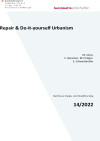
Das Projekt verfolgte die Zielsetzung, das transformative Potential des Repair & DIY-Urbanism zu stärken. Dies erfolgte im Hinblick auf eine grundlegende Umwandlung des vorhandenen wenig nachhaltigen Umgangs mit Gebrauchsgütern in konkreten Stadtbezirken, deren Infrastrukturen und dominante Wirtschafts- und Alltagspraktiken hin zu resilienten Stadtbezirken.
Schriftenreihe
14/2022
M. Jonas, S. Hassemer, M. Piringer, E. Schwarzlmüller
Herausgeber: BMK
Deutsch, 88 Seiten
Downloads zur Publikation
KLIMDO - Gesamtstädtische Energie- und Klimastrategie der Stadt Dornbirn als Grundlage der Erreichung einer Klimaneutralität 2030
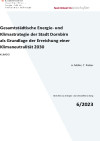
Durch die Erhebung relevanter Datengrundlagen, deren Zusammenführung sowie Verräumlichung in einer gesamthaften Datenbank wurde ein aktuelles und fortführbares System zur gesamtstädtischen Energie- und CO2-Bilanzierung sowie entsprechender KPIs entwickelt. Darauf aufbauend konnten durch verschiedene Szenarien die wesentlichsten Stellhebel zur Erreichung der Klimaneutralität erarbeitet werden. Die zentralen Erkenntnisse fließen in die Erstellung einer gesamtstädtischen Energie- und Klimastrategie ein.
Schriftenreihe
6/2023
A. Müller, T. Pieber
Herausgeber: BMK
Deutsch, 46 Seiten
Downloads zur Publikation
CITYGovernance: Übergeordnete klimaneutrale Governance für Städte
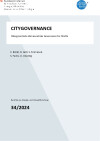
Ziel der F&E Dienstleistung war, Erkenntnisse über Hemmnisse und Hindernisse der übergeordneten Governance für die Zielerreichung “Klimaneutralität von österreichischen Städten” zu erlangen, zu strukturieren und in einer publizierbaren Studie aufzubereiten. Die Studie konzentriert sich dabei auf die Bereiche Energie, Gebäude und Mobilität und enthält Handlungsempfehlungen zu notwendigen Rahmenbedingungen und Änderungsbedarfen.
Schriftenreihe
34/2024
C. Böckl, H. Grill, S. Formanek, S. Fuchs, U. Unzeitig
Herausgeber: BMK
Deutsch, 140 Seiten
Downloads zur Publikation
Subtraction as a measure to Preserve and Insulate historic Developments by Electric Robots (SPIDER)
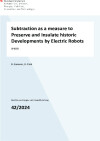
In dieser Sondierung soll das Potential von autonomen, daten-getriebenen Robotern erschlossen werden, die in einem andauernden kontinuierlichen Prozess thermische Performanceverbesserungen durch Schaffung von dämmenden Lufteinschlüssen erzielen.
Schriftenreihe
42/2024
B. Sommer, U. Pont
Herausgeber: BMK
Deutsch, 84 Seiten
Downloads zur Publikation
NEB Salon – Potentials for French-Austrian cooperation in the New European Bauhaus
21. Mai 2025, 13:00 - 15:00 Uhr
Online
The info webinar presented the 2025 NEB topics in Horizon Europe. The event identified common fields of expertise and fostered French-Austrian collaboration in the upcoming calls.
Kapazitätsanpassung der Bauwirtschaft für eine erhöhte Sanierungsrate
Die notwendige Erhöhung der Sanierungsleistung wird angesichts der weiterhin guten Auftragslage im Neubau nur mit einer Ausweitung der Kapazitäten der Bau- und Bauproduktewirtschaft zu erreichen sein. Dies hat große Auswirkungen auf den Arbeitsmarkt und bietet die Chance für strategische Weichenstellungen, stößt allerdings auch auf Barrieren.
Innovative Gebäude und Plus-Energie-Quartiere
Das Plus-Energie-Quartier nutzt effiziente Einzeltechnologien, deren Verschränkung Synergien zwischen den Infrastrukturebenen ermöglichen und schafft es, durch Innovation und integrierter Planung ressourcenschonend, effizient, effektiv und gleichzeitig auch lebenswert zu sein.
Digitale Transformation der österreichischen Bauwirtschaft und Auswirkungen auf die Erwerbstätigen
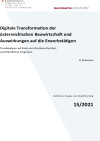
In einer Trendanalyse werden wahrscheinliche Auswirkungen der digitalen Transformation in der österreichischen Bauwirtschaft auf den Branchen-Arbeitsmarkt untersucht. Auf Basis von Feedback von BranchenexpertInnen wird für die kommenden fünf bis zehn Jahre analysiert, für welche Berufsgruppen digitalisierungsinduzierte Effekte eher zu einer steigenden vs. sinkenden Arbeitskraftnachfrage führen.
Schriftenreihe
15/2021
H. Eichmann
Herausgeber: BMK
Deutsch, 94 Seiten
Downloads zur Publikation
Biotope City – Bauanleitung für die grüne Stadt der Zukunft
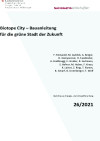
"Biotope City" ist ein Projektleitbild für die Umsetzung umfassender urbaner Begrünung mit dem Ziel, die regenerativen Mechanismen der Natur zu nutzen. So soll die Lebensqualität umfassend, nachhaltig und kosteneffizient erhöht und Resilienz gegen Wetterextreme in Städten verbessert werden. Zentrale Zielsetzung des Projekts ist die Generierung von Bestandteilen einer realitätsgerechten, verallgemeinerbaren und übertragbaren Bauanleitung für die grüne Stadt der Zukunft.
Schriftenreihe
26/2021
F. Reinwald, M. Auböck, A. Berger, D. Damyanovic, H. Fassbinder, A. Graßmugg, E. Gruber, R. Gutmann, S. Hafner, M. Huber, F. Kraus, R. Lainer, Z. Ring, T. Romm, B. Scharf, B. Unterberger, T. Wolf
Herausgeber: BMK
Deutsch, 185 Seiten
Downloads zur Publikation
Folder: Auf dem Weg zum Plusenergiequartier
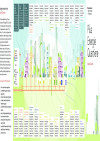
Der Info-Folder bietet einen Überblick über Technologien und Teilsysteme für Plusenergiequartiere und liefert Erklärungen, welche strategischen Ziele mit dem Programm „Stadt der Zukunft“ in Richtung Plusenergiequartiere verfolgt werden.
Herausgeber: BMVIT (2019)
Mehrsprachig, 2 Seiten
Downloads zur Publikation
Folder: Innovative Stadtbegrünungstechnologien
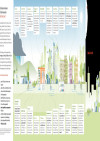
Dichte Bebauung, damit einhergehende Bodenversiegelung und wenige Grünflächen sind in Zeiten des Klimawandels enorme Herausforderungen. Der Folder zeigt vielfältige Möglichkeiten, wie innovative Begrünungstechnologien zur Klimawandelanpassung von Städten beitragen.
Herausgeber: BMK (2020)
Mehrsprachig, 2 Seiten
Downloads zur Publikation
Energie- und Ressourceneinsparung durch Urban Mining-Ansätze
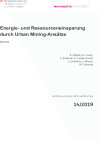
Durch die Nutzung natürlicher Ressourcen in langlebigen Produkten und Bauwerken haben sich in unseren Städten enorme Materiallager aufgebaut. Das Potential dieser urbanen Minen, zur Ressourceneffizienz moderner Städte beizutragen, wird im Rahmen des Projektes analysiert.
Schriftenreihe
14/2019
A. Allesch, D. Laner, C. Roithner, K. Fazeni-Fraisl, J. Lindorfer, S. Moser, M. Schwarz
Herausgeber: BMVIT
Deutsch, 185 Seiten
Downloads zur Publikation
IdeenAUSTAUSCH zur FTI Förderschiene TIKS - Technologien und Innovationen für die Klimaneutrale Stadt 2022
2. Dezember 2022, 10:00 - 12:15 Uhr
Online
Innovationslabore gelten als Inkubatoren für Ideen und Projekte und wenden sich mit dieser Einladung an alle Akteur:innen, die sich mit Forschungs- und Entwicklungsfragen im Zusammenhang mit klimaneutralen sowie resilienten Quartieren und Städten beschäftigen.
Zertifizierung von Siedlungen / Quartieren
Sondierungsprojekt zur Übertragbarkeit des Schweizer Systems der 2000-Watt Arealbewertung auf Österreich
